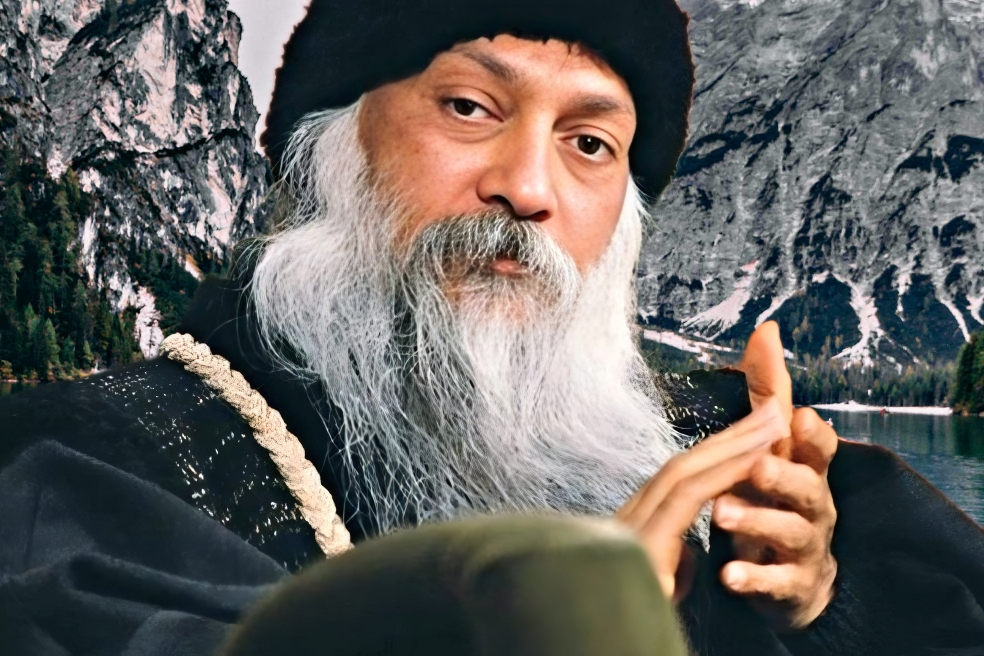Rajneesh Osho, one of the most enigmatic and controversial spiritual leaders of the 20th century, continues to captivate the minds of millions worldwide. Known for his revolutionary teachings, provocative ideologies, and unconventional lifestyle, Rajneesh Osho carved a unique path in the realm of spirituality. From his early life in India to the establishment of his ashrams and the global spread of his philosophy, Osho’s journey is a tale of brilliance, rebellion, and enduring influence.
Early Life and Influences of Rajneesh Osho
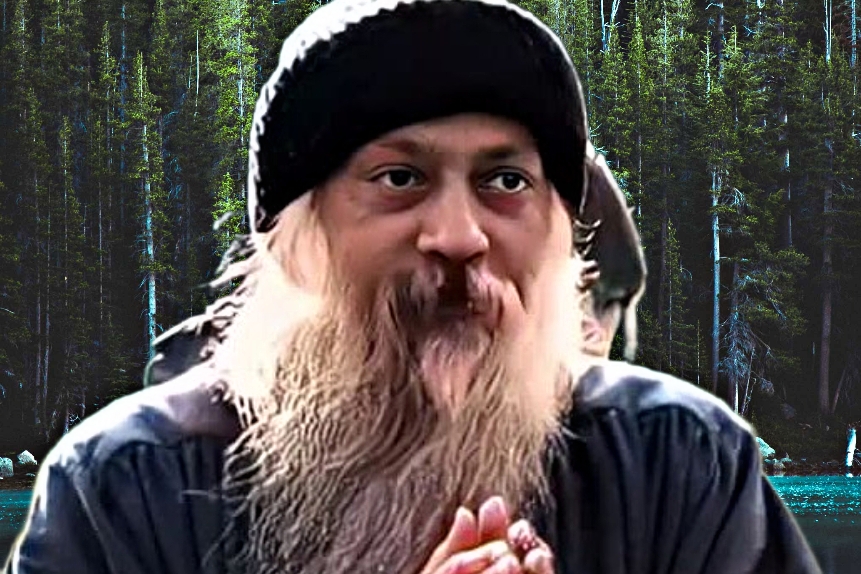
Born as Chandra Mohan Jain on December 11, 1931, in Kuchwada, a small village in Madhya Pradesh, India, Rajneesh Osho displayed exceptional intelligence and curiosity from a young age. Raised in a Jain family, his early experiences shaped his spiritual outlook.
Childhood and Education
Rajneesh was deeply inquisitive, often challenging traditional beliefs and questioning the status quo. His grandparents, who raised him, allowed him the freedom to explore various spiritual practices and philosophies. This early exposure to divergent worldviews set the stage for his later teachings.
He pursued higher education at Jabalpur and Sagar Universities, earning degrees in philosophy. His academic background gave him a strong foundation in logic, metaphysics, and existentialism, which later became integral to his spiritual teachings.
The Emergence of Rajneesh Osho as a Spiritual Teacher
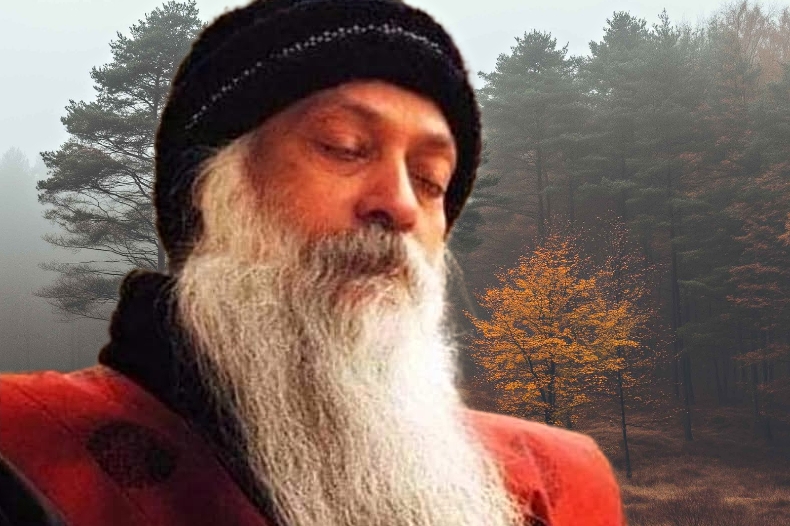
Rajneesh Osho’s journey as a spiritual teacher began in the 1960s, when he started giving public lectures across India. His eloquence, sharp intellect, and ability to deconstruct complex spiritual and philosophical ideas drew large audiences.
Critique of Organized Religion
One of Rajneesh Osho’s distinguishing traits was his fearless critique of organized religions, societal norms, and political systems. He argued that these institutions often suppressed individual freedom and spiritual growth.
Emphasis on Individual Enlightenment
Unlike traditional gurus, Rajneesh Osho placed a strong emphasis on individual enlightenment. He believed that every person has the potential to attain higher consciousness and that no external authority should dictate their spiritual path.
Introduction of Meditation Techniques
Rajneesh Osho introduced innovative meditation techniques such as Dynamic Meditation, Kundalini Meditation, and Nadabrahma Meditation. These practices focused on catharsis, mindfulness, and self-awareness, making them accessible to people from diverse cultural backgrounds.
The Establishment of the Pune Ashram
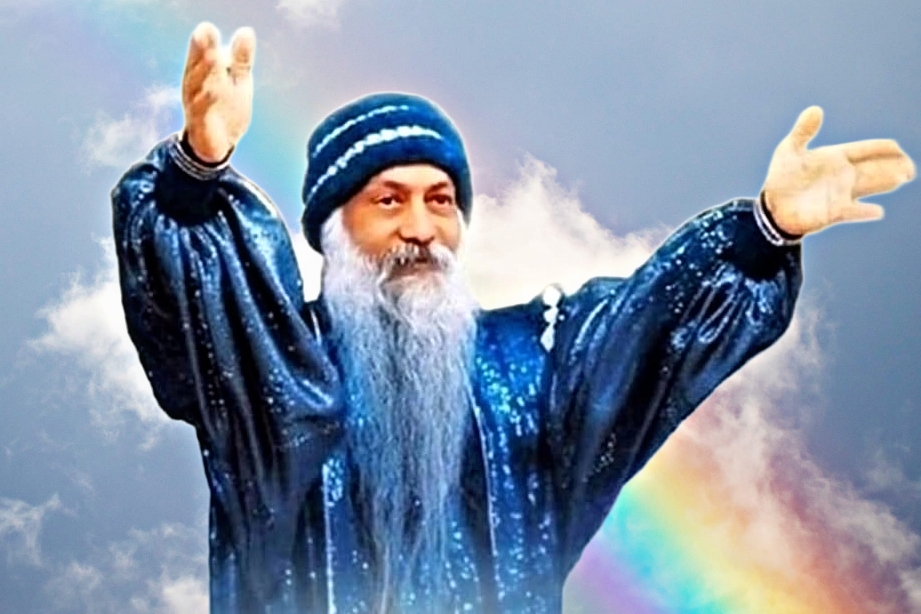
In 1974, Rajneesh Osho founded an ashram in Pune, India, which became the epicenter of his teachings. The Pune Ashram attracted thousands of seekers from across the globe, eager to explore his revolutionary approach to spirituality.
Multidimensional Practices
The ashram offered a blend of spiritual practices, including meditation, yoga, therapy sessions, and discourses. Rajneesh Osho’s teachings often integrated insights from Western psychology, Eastern mysticism, and contemporary science.
Global Appeal
The ashram’s open-minded approach to spirituality, coupled with its vibrant community life, drew individuals from various walks of life, including intellectuals, artists, and entrepreneurs. The influx of Western disciples, who referred to him as “Osho,” significantly boosted his international recognition.
Controversies Surrounding Rajneesh Osho
While Rajneesh Osho’s teachings gained widespread acclaim, his unorthodox methods and candid opinions sparked numerous controversies.
Views on Sexuality
One of the most contentious aspects of Rajneesh Osho’s philosophy was his open discussion about sexuality. He regarded sex as a natural and sacred aspect of human life, challenging societal taboos and advocating for its conscious exploration as a step toward spiritual awakening.
Clash with Religious Leaders
Osho’s criticism of established religions, particularly Hinduism, Christianity, and Islam, led to backlash from traditionalists and religious leaders. They accused him of promoting hedonism and undermining moral values.
Materialism and Wealth
Rajneesh Osho’s opulent lifestyle, including his collection of Rolls-Royce cars, contrasted sharply with the ascetic ideals associated with spiritual leaders. This dichotomy earned him both admiration and criticism, with detractors accusing him of hypocrisy.
The Rajneeshpuram Experiment
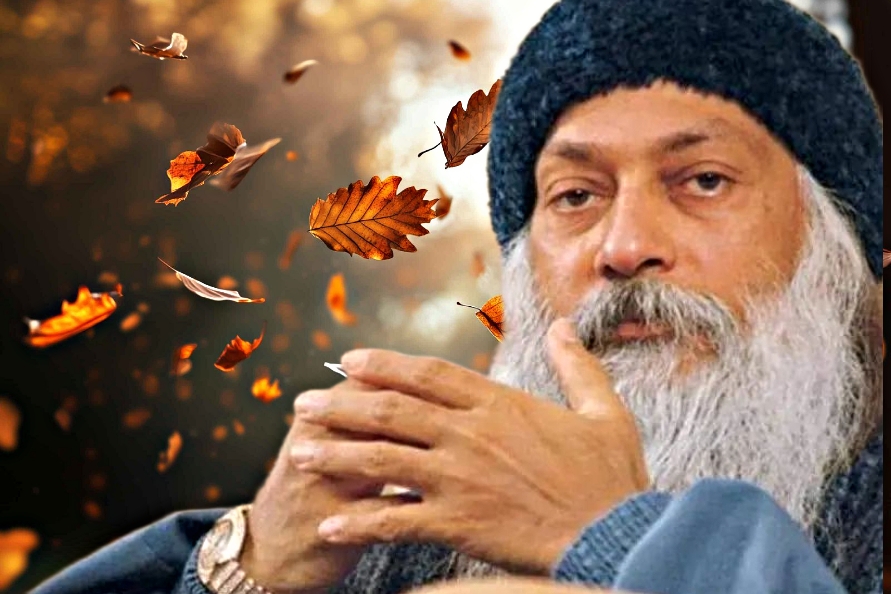
In 1981, Rajneesh Osho moved to the United States and established a commune called Rajneeshpuram in Wasco County, Oregon. This phase of his life was marked by both innovation and controversy.
The Vision of Rajneeshpuram
Rajneeshpuram was envisioned as a utopian community based on Osho’s teachings. The commune thrived with a self-sufficient infrastructure, including farms, schools, and businesses.
Legal and Social Conflicts
The commune’s rapid expansion and unconventional practices led to tensions with local authorities and residents. Allegations of bioterrorism, immigration fraud, and illegal wiretapping further escalated the conflict, culminating in Osho’s arrest and eventual deportation in 1985.
The Return to Pune and Osho’s Later Years
After leaving the United States, Rajneesh Osho returned to India and re-established his ashram in Pune. This phase of his life was marked by introspection and a renewed focus on his teachings.
Adoption of the Name ‘Osho’
In the late 1980s, Rajneesh adopted the name “Osho,” derived from the Japanese word “oceanic,” symbolizing the dissolution of individual identity into universal consciousness.
Declining Health and Passing
Osho’s health deteriorated in his later years, and he passed away on January 19, 1990. His death marked the end of an era, but his teachings continued to thrive through his disciples and the institutions he established.
Rajneesh Osho’s Philosophy and Teachings
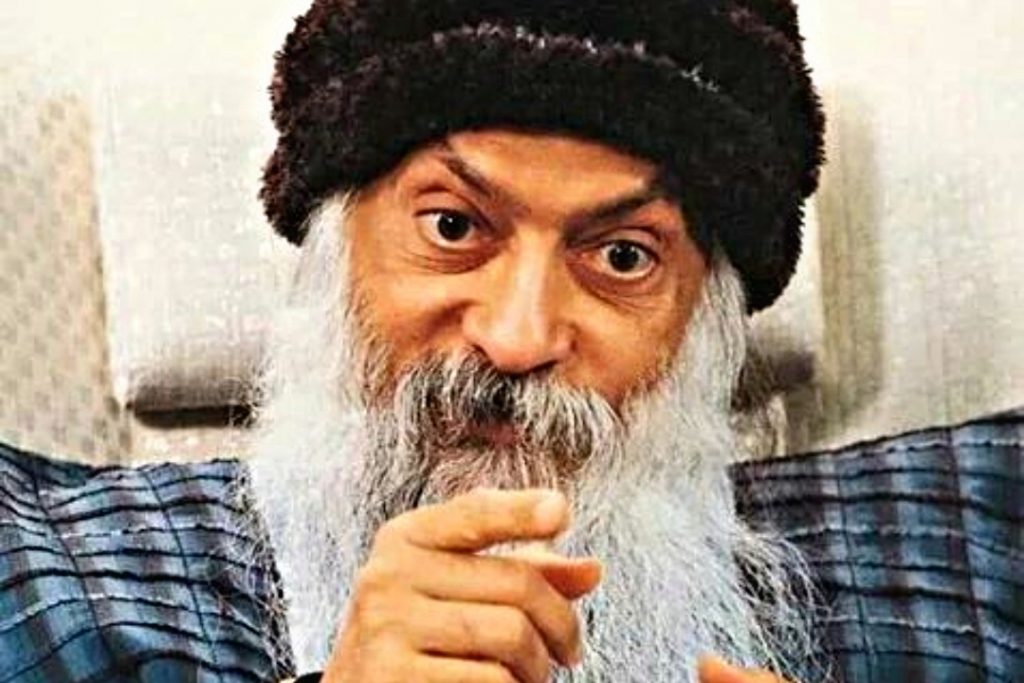
Osho’s teachings are vast and multifaceted, addressing topics ranging from love and meditation to politics and creativity.
Key Philosophical Tenets
- Zorba the Buddha:
Osho envisioned a new type of human being who embodies the earthly pleasures of Zorba, the Greek, and the transcendental awareness of Buddha. - Living in the Present:
Osho emphasized the importance of living fully in the present moment, free from the burdens of the past and anxieties about the future. - Freedom and Individuality:
He advocated for complete personal freedom, encouraging individuals to question authority and embrace their authentic selves.
Impact on Meditation
Osho’s meditation techniques have gained immense popularity for their accessibility and effectiveness. Practices like Dynamic Meditation and Kundalini Meditation continue to be widely practiced in spiritual communities worldwide.
Osho’s Philosophical Roots: Bridging Eastern and Western Ideologies
Rajneesh Osho’s teachings are a blend of Eastern mysticism and Western existential philosophy. He had a profound understanding of both traditions, which allowed him to appeal to a diverse audience. His ability to reconcile the two schools of thought has been a cornerstone of his global influence.
Eastern Mysticism
Osho drew heavily from ancient Indian scriptures like the Vedas, Upanishads, and Bhagavad Gita, yet he reframed them in a contemporary context. He emphasized self-realization, inner peace, and the pursuit of enlightenment but did so in a manner accessible to modern seekers.
- Tantra and the Sacred Union:
Osho’s interpretation of Tantra challenged the traditional narrative of austerity in spirituality. He viewed physical experiences, including sexuality, as pathways to transcendence when approached with mindfulness and reverence. - The Concept of the Witness (Sakshi):
Osho emphasized the idea of becoming a “witness” to one’s thoughts, emotions, and actions. He believed this detached observation would lead to liberation from the ego and deeper awareness of the self.
Western Existentialism
Osho’s teachings also reflect the existentialist ideas of Friedrich Nietzsche, Søren Kierkegaard, and Jean-Paul Sartre. He frequently discussed themes like freedom, authenticity, and the search for meaning.
- Nietzschean Influence:
Osho admired Nietzsche’s proclamation that “God is dead,” interpreting it as a call to abandon rigid dogmas and create one’s own spiritual path. - Rebellion Against Conformity:
Drawing from existentialism, Osho encouraged individuals to reject societal norms that hinder personal growth. This aspect of his philosophy particularly resonated with younger audiences in the 1960s and 70s who were rebelling against traditional institutions.
Osho’s Approach to Meditation: An Innovative Paradigm
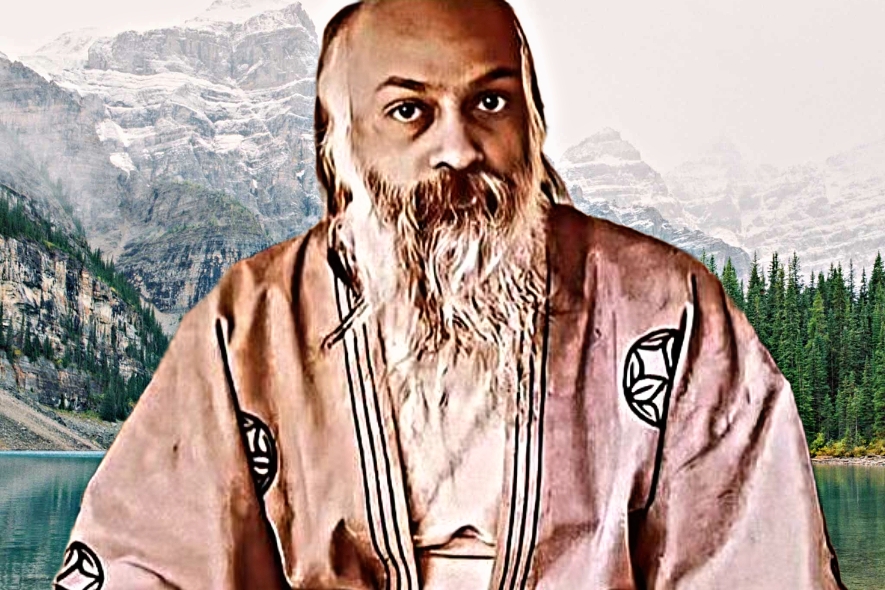
Meditation was central to Osho’s teachings, but his methods broke away from conventional practices. He believed that modern people, burdened by stress and emotional suppression, needed active and dynamic methods to prepare for stillness.
Dynamic Meditation
Osho’s most famous technique, Dynamic Meditation, is a five-stage process involving intense physical activity followed by complete silence. The stages include chaotic breathing, catharsis, jumping, stillness, and celebration.
- Why It Works:
This method is designed to release pent-up energy, clear emotional blockages, and pave the way for deeper meditative states. - Global Popularity:
Today, Dynamic Meditation is practiced in wellness retreats and meditation centers worldwide, appealing to those who struggle with traditional seated meditation.
Other Meditation Techniques
Osho developed numerous other practices, including:
- Kundalini Meditation: Focused on awakening the dormant energy at the base of the spine.
- Nataraj Meditation: Encouraging dance as a meditative act of surrender and flow.
- Laughter Meditation: Using laughter to transcend mental rigidity and achieve spontaneous joy.
Global Influence of Rajneesh Osho
The teachings of Rajneesh Osho transcended national boundaries and resonated with audiences across the globe. His ability to articulate universal truths made him a spiritual guide to millions.
Western Adoption of Osho’s Philosophy
The 1960s and 70s were a period of cultural upheaval in the West, marked by the countercultural movement, the Vietnam War, and the rise of the civil rights movement. During this time, Rajneesh Osho’s emphasis on individuality, freedom, and love appealed to a generation seeking alternatives to traditional structures.
- The Hippie Movement:
Many in the hippie movement found solace in Osho’s teachings, which advocated living authentically and embracing life fully. - Psychological Integration:
Osho’s incorporation of psychology into spirituality made his ideas particularly appealing to Western audiences familiar with psychoanalysis and humanistic psychology.
Cultural Ambassadors
Osho’s global reach was amplified by disciples who spread his message through various mediums:
- Books: Over 650 books based on Osho’s discourses have been published, with translations in more than 60 languages.
- Music and Art: Artists like Deva Premal and Miten have incorporated Osho’s teachings into their music, creating a genre of spiritually inspired art.
- Documentaries and Media: Films like Wild Wild Country reignited interest in Osho, bringing his life and controversies to a new generation.
Criticisms and Controversies Revisited
While Osho’s teachings continue to inspire, his legacy is not without its detractors. The controversies surrounding his life remain topics of debate in both academic and spiritual circles.
Materialism vs. Spirituality
Osho’s lavish lifestyle, including his collection of 93 Rolls-Royce cars, often raised eyebrows. Critics argued that his wealth contradicted the spiritual values he espoused.
- Osho’s Perspective:
Osho himself argued that material wealth and spirituality were not mutually exclusive. He believed that embracing abundance could enhance one’s spiritual journey, provided it was approached without attachment.
Legal Issues and Commune Scandals
The events at Rajneeshpuram, including allegations of bioterrorism and criminal activities by his followers, cast a shadow on Osho’s image.
- Leadership Challenges:
Many of these actions were attributed to a select group of disciples, particularly Ma Anand Sheela, who served as Osho’s secretary during the commune’s peak years. - Posthumous Reassessment:
In recent years, scholars have reassessed these events, highlighting Osho’s limited involvement in the day-to-day operations of Rajneeshpuram.
Osho’s Relevance in Modern Times
In today’s fast-paced, interconnected world, Osho’s teachings have gained renewed relevance. His emphasis on mindfulness, self-awareness, and breaking free from societal conditioning resonates with contemporary challenges.
Corporate and Wellness Sectors
Osho’s meditation techniques are increasingly being adopted in the corporate world to combat stress and enhance productivity. Wellness retreats centered on Osho’s teachings have become popular destinations for individuals seeking balance and rejuvenation.
Youth Engagement
Osho’s call for individuality and rebellion against conformity continues to appeal to younger generations navigating identity crises and societal pressures.
Online Presence
The digitization of Osho’s discourses has made his teachings more accessible than ever. Platforms like YouTube, audiobooks, and meditation apps ensure that his wisdom reaches a global audience.
Legacy of Rajneesh Osho
More than three decades after his passing, Rajneesh Osho’s influence remains significant.
Osho International Meditation Resort
The Pune Ashram, now known as the Osho International Meditation Resort, is a global hub for meditation, self-discovery, and creative expression.
Global Spread of Teachings
Osho’s discourses have been translated into over 60 languages, making his wisdom accessible to millions. His books, such as The Book of Secrets and Autobiography of a Spiritually Incorrect Mystic, continue to inspire readers.
Pop Culture and Media
Osho’s life and teachings have been the subject of numerous documentaries, including the popular Netflix series Wild Wild Country, which explored the complexities of his time in Oregon.
Conclusion: The Dual Legacy of Rajneesh Osho
Rajneesh Osho remains a paradoxical figure: a spiritual rebel who embraced materialism, a mystic who courted controversy, and a teacher whose influence transcended time and geography. His life and teachings challenge conventional narratives about spirituality, urging individuals to embrace life fully and authentically.

